Confession: One of my teaching subjects is Drama, so I reckon my teaching philosophy and approach maybe just a little skewed towards the more dramatic. This isn’t the only reason that I am such a fan of Reader’s Theater. When you’ve read this post and taken in all the points I make, you’ll agree with me that this is a really great approach to use in the classroom.
This post will present you with a useful Readers Theater kit. You’ll learn what Reader’s Theater is, why you should use it in the classroom, and how to do so. I’ll also point out some useful resources and give you some hints about using the approach.
Table of Contents
- What is Reader’s Theater?
- Reader’s Theater Scripts
- Benefits of Reader’s Theater
- Steps of a Reader’s Theatre Activity
- Some ideas on how to use Reader’s Theater in class
- Resources for Reader’s Theater
- Reader Theater Kits FAQs
- Final thoughts on the Reader’s Theater Kit
What is Reader’s Theater?
Reader’s Theater is a creative approach to teaching and learning that helps students develop their reading skills.
Quite simply, instead of reading books, students read scripts of the stories. Aloud. Together.
With Reader’s Theater, each student is assigned a role in a story. Sometimes, the whole class is involved in the same script. They may also be divided into groups, which may all read the same story, or be assigned different scripts.
To begin with, the teacher explains their story to the class or each group and a little about their character to each student.
The students practice reading the story a few times. As they do so, they will become more confident with their characters and reading. After a few rehearsals, the class presents the story (stories) as a form of performance.
Separate groups can present to the rest of the class. If the whole class does one story, they present it to the other classes in the grade.

Reader’s Theater Scripts
There are plenty of Reader’s Theater scripts available on the internet, but you can also create your own.
Choose a topic to work with that is relevant to your grade. This can be a story or an aspect of history or the curriculum.
Find the characters you need. In a story, this is easy. If you are creating a story from history (or the like), you need to identify the characters that are important or relevant to the content.
Think of your script as being a radio drama. There is no narration and no movement. Everything has to come through the voices.
For example: Imagine you are writing a script based on Goldilocks and the Three Bears.
A part of the script may be:
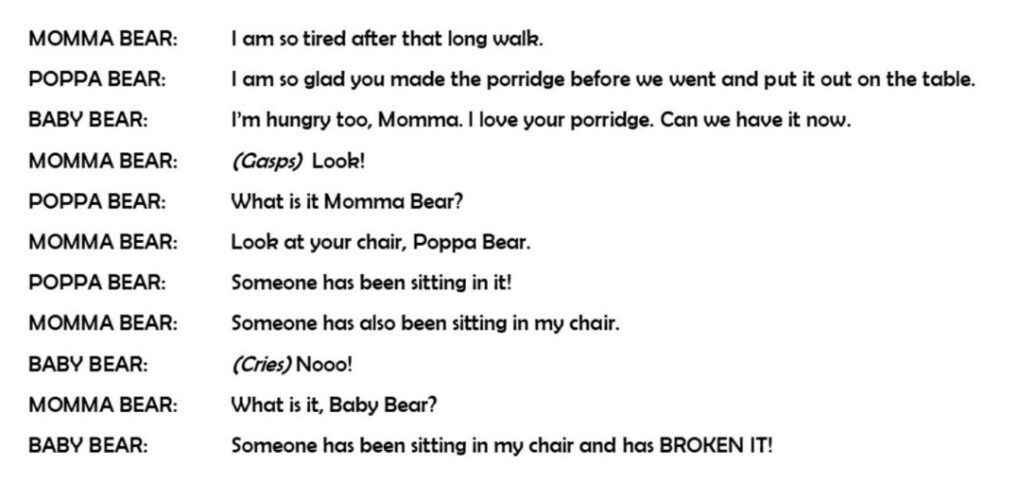
If you are creating a script based on the Boston Tea Party, a part of the script may look like this:
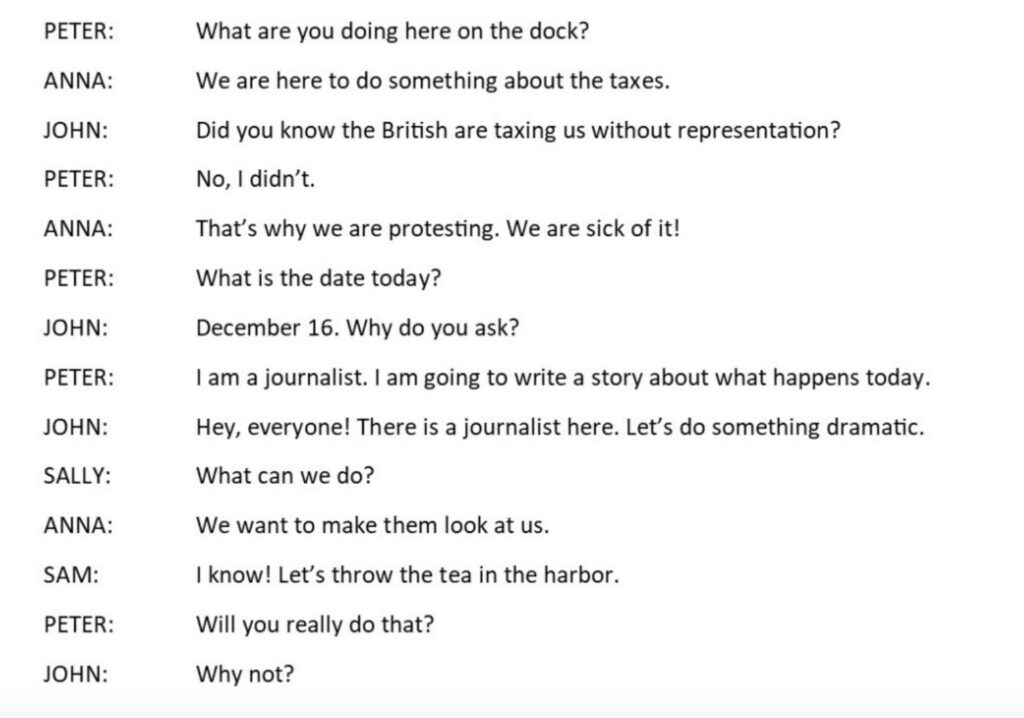
Benefits of Reader’s Theater
I always think that the greatest benefit of Reader’s Theater is that the kids have fun. What more can you ask? There are a whole lot of other advantages, too.

Reader’s Theater will help your students discover the beauty of words and reading
This is one of the keys to education in general. It is also an attribute they can take into their language studies through their schooling.
As the students practice reading their scripts, they’ll become more fluent in their reading. This will give them more confidence to read aloud, but also on their own.
Reader’s Theater helps students become more comfortable reading in front of an audience
Reading aloud can be intimidating for anyone. Often, even students who read quite well stumble when they read aloud in class. Using the Reader’s Theater approach helps them to overcome this.
In an effective Reader’s Theater script, each character only says one or two lines at a time. This means that the students aren’t faced with a block of text to read. Everyone can manage one or two sentences without feeling intimidated.
Reader’s Theater is an inclusive process
When a group of students, or the whole class, is involved in reading a script, then no one stands out. Even if a student only has one line, they are still part of the process.
Students of any ability can take part in reading a script in class. Choose the cast carefully. If a student struggles with reading, then give them a character that says very little. You can also switch it around and give the most fluent reader only a few lines.
The whole idea is to let each student feel that they are part of the reading team. The script won’t work without everyone playing their part.
Reader’s Theater helps develop fluency
No drama performance is a once-off. The actors need to practice reading their lines until they know them. In performance theater, this means they must know them by heart. In Reader’s Theater, the ‘actors’ must know how to read their lines well. They don’t have to learn them.
As the cast of the drama reads the script a number of times, the students will become more fluent in their reading. They will build confidence in their reading ability.
This fluency in reading will begin to filter into the student’s other reading activities. This will help them to build more confidence, which will help them in all their schooling.
Reader’s Theater helps learners learn to read energetically
For someone to read aloud effectively, it is necessary for them to inject some energy into their voices. This isn’t always easy when we read alone. However, when students read together, they can feed off each other’s energy. This will keep them reading energetically.
Creating a character along with other characters is also a great way for students to read energetically.
Reader’s Theater teaches learners to read with emotion
In the script of a story, characters show reactions to each other and to different situations. This means the students have to put some emotion into their voices when they read their scripts.
Reader’s Theater helps students to use their voices in different ways to communicate their emotions.
Reader’s Theater is key in the development of students’ reading ability
Practice may not necessarily make perfect. It can definitely create improvement, though. The more students read the better they will learn to read. However, students are not always fond of reading on their own. This is where Reader’s Theater comes in.
In a class reading or performance, students need to read, or the story will not work. They also practice the script a number of times. This means they practice reading. And this will help them to develop their reading ability.
Reader’s Theater helps to build confidence
Ultimately, all the benefits of Reader’s Theater come down to building confidence in learners. ‘Oh, I can read, and I can read well. Other people want to listen to me. I can work as part of a team. Reading is fun. Class is fun.’
Ultimately, I think the one benefit we don’t see directly but that develops over the year is the sense of ‘I can do this reading thing, so I must be able to do other things too.’

Steps of a Reader’s Theatre Activity
Here are the steps you should take when you practice Reader’s Theater in class
Consider what it is you want your students to learn from their Reader’s Theater Exercise
This may be their reading skills, or subject related.
Choose the subject matter or story for the exercise
Make sure this is relevant to the grade and section of the curriculum.
Decide if the class will do the reading together or if you need to divide them up
You also need to decide if the groups will all do the same story.
Find a script (or scripts) for the reading, or create your own
Remember to add characters to your script so all the students get a reading part.
Tell the students the basic storyline and the characters
Assign a role to each student
Even if a student only says a few words, they must all take part.
Guide the students to read through the script once
You may need to clarify some words or meanings.
Make sure every student understands everything they say
Let the students rehearse their plays.
This can be on their own, or with your direction
After some rehearsing, the students perform their reading
This should be to an audience: their classmates, other classes in the grade or even parents.
Some ideas on how to use Reader’s Theater in class
Let the students have fun
The whole point of doing Reader’s Theater is for the students to learn a whole lot of different skills. It’s pointless putting pressure on them and stressing them. You may find that many of your students are shy, or even scared of reading in front of people.
Keep the emphasis of the whole process on ‘We are doing this together’ and ‘Isn’t this a fun way to learn?’
Get involved in the process
From the beginning, let the students know that you are in this with them. Tell them the basic story of the script and discuss it with them. Find the climax together. Ask the students when the characters should be excited, or sad etc.
You can read the lines with the students, or have them copy you, until they are comfortable reading on their own.
Let the students take ownership
Reader’s Theater is about students reading aloud. Discuss their characters with them, then let them take ownership of them. Each student should decide how their character speaks and what emotions they need to show.
In middle and higher grades, you can work with the individual students to understand how to use their voices to achieve how they think their character should speak.
If the students are working in groups, it’s also important to hand over the reins once everything is organized. Let them drive the rehearsals and even the performance.
Resources for Reader’s Theater
Reader’s Theater Play: Black History Heroes.
This resource is a script for Black History Heroes: Not Alone available from TeachSimple.
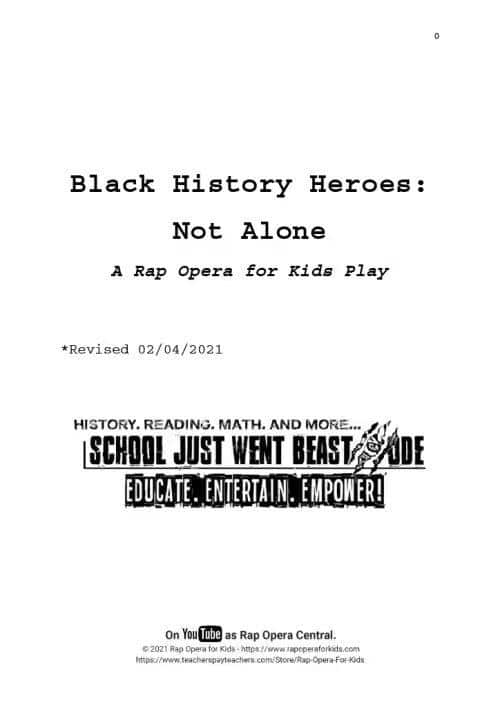
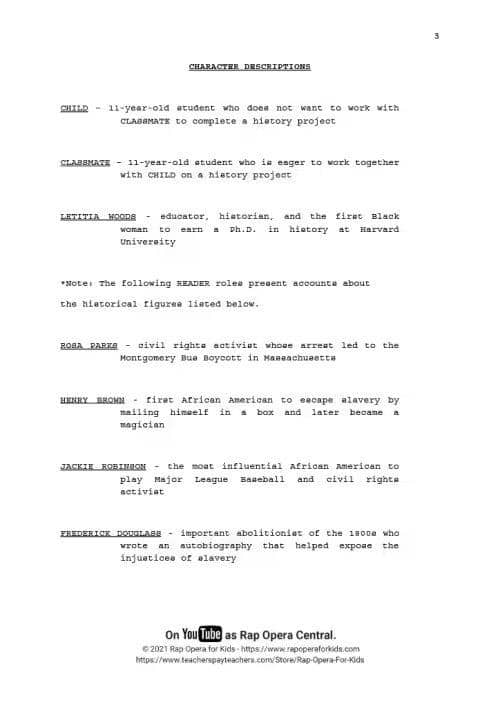
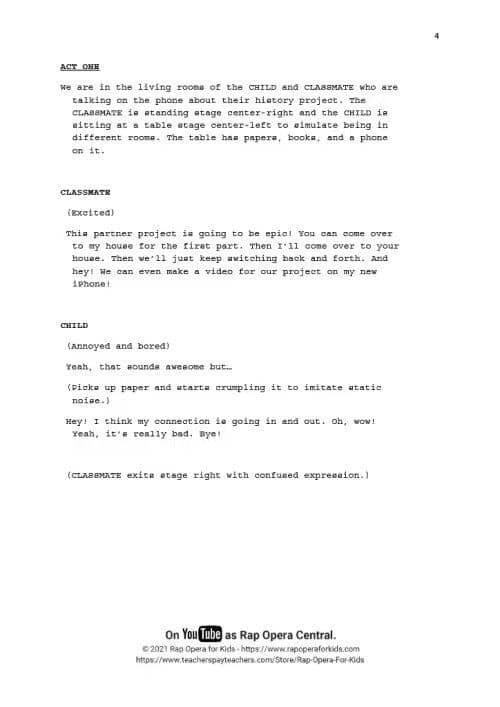
This script introduces students to the Black History heroes Rosa Parks, Henry Brown, Jackie Robinson and Frederick Douglas.
You’ll find the script, with information about the stage and cast. There are also notes to the teacher.
The resource is suitable for Grades 4 – 6.
Earth Day Reader’s Theater
This is a script for The Earth Day Hen and Friends from TeachSimple.
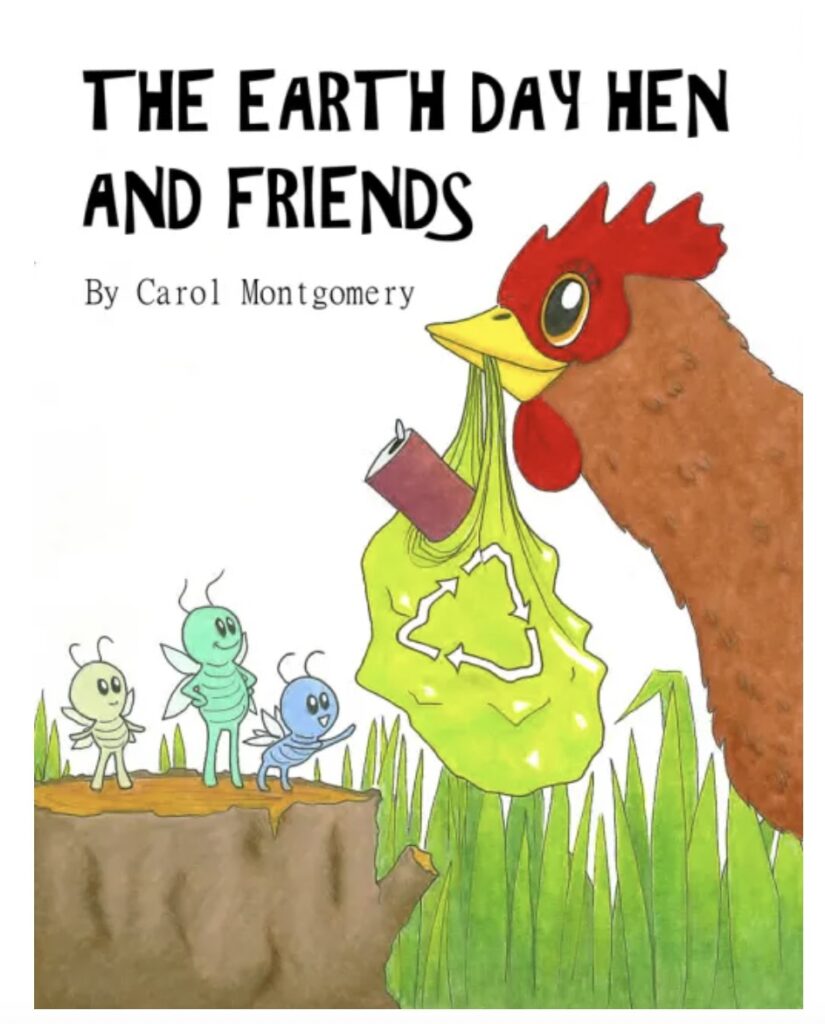
This Earth Day Reader’s Theater offers an engaging method for students to grasp the significance of Earth Day. Through performing various roles in the narrative ‘Earth Day Hen’, students gain a deeper comprehension of the holiday’s essence and importance. It serves as an excellent tool for educators to involve their students in an enjoyable yet informative exercise.
This resource is for Grades 1 – 4.
Reader’s Theatre: Tall Tales
This resource is based on a script called Reader’s Theatre Tall Tales available from TeachSimple.
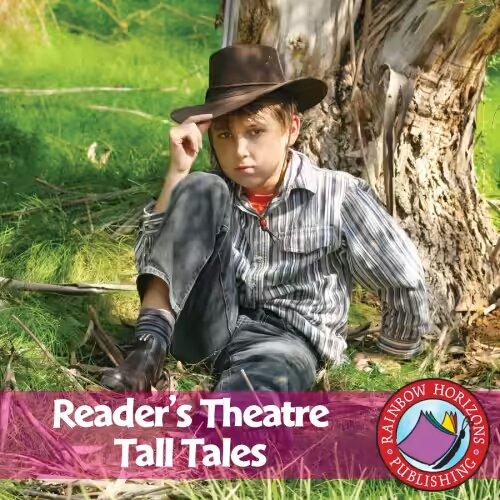
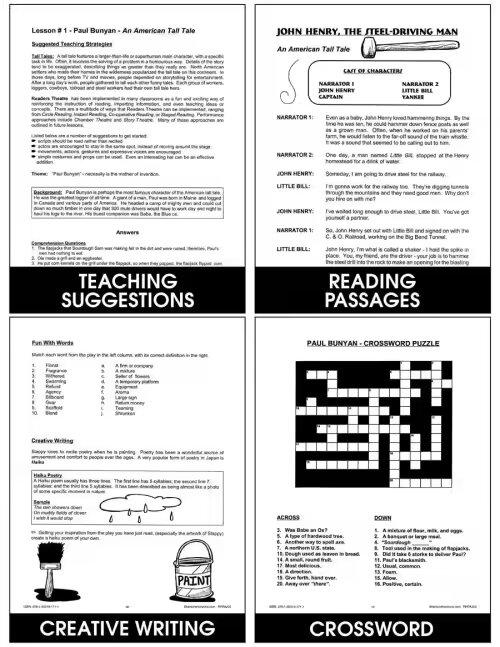
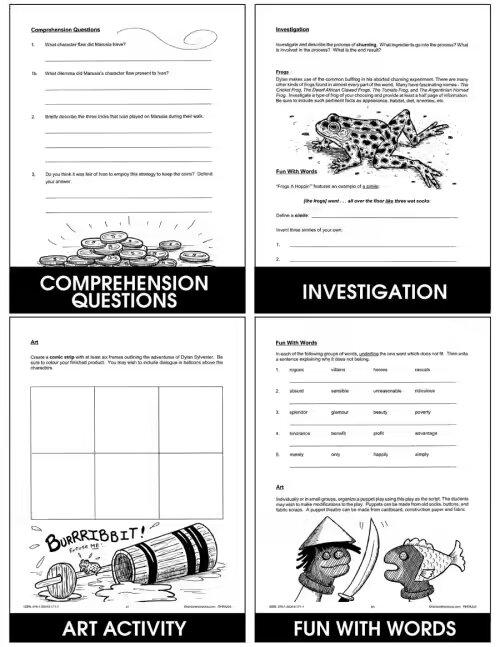
The Tall Tales unit introduces students to fascinating characters through the unique approach of Readers Theatre. Originating from North America in the 1820s, these tales enhance students’ oral reading and comprehension skills. The Theatre & Folktales lesson, complete with scripts, creative writing activities, and puzzles, provides a comprehensive, engaging learning experience.
It is suitable for Grades 4 – 6.
Resource 4
This Reader’s Theatre Folktales is available from TeachSimple.

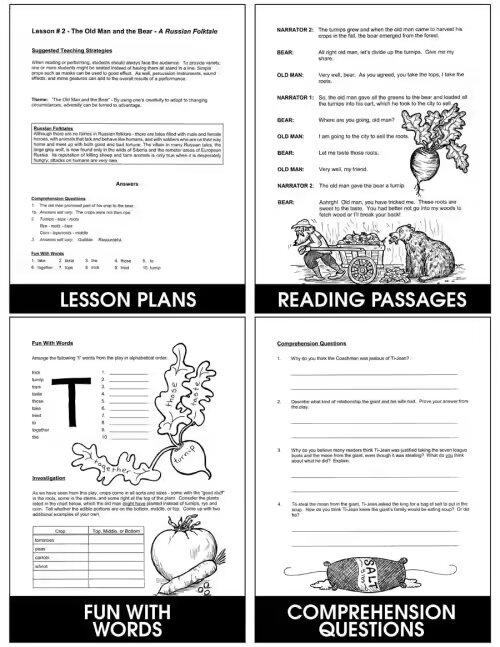
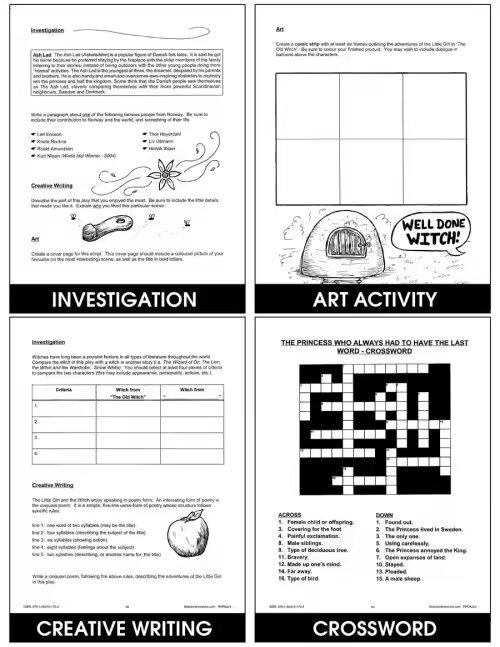
The Folktales Unit offers a diverse collection of world-renowned and lesser-known stories. Through the innovative approach of Readers Theatre, students are introduced to delightful plays that have been cherished for centuries. This method also enhances students’ oral reading and comprehension skills by encouraging them to use their voices, facial expressions, and gestures to bring characters to life. The Theatre & Folktales lesson includes a comprehensive plan with scripts, creative writing activities, puzzles, and an answer key for both teachers and students.
It is suitable for Grade 4 – 6.
Reader Theater Kits FAQs
The aim of Reader’s Theater is for students to have fun and improve their reading fluency while taking part in a script reading. They do need to read aloud and take part in the story. However, this doesn’t need to be in front of an audience. They can perform the story for the teacher alone.
In a Reader’s Theater performance, the students present a story in script form. They read aloud, with expression and emotion. The students may use some gestures and facial expressions to communicate their characters and the action. The emphasis in the performance is on the words, though.
Although the focus of Reader’s Theater is on reading and performance, it doesn’t only need to be used in language class. You can use Reader’s Theater for students to learn other information in other subjects. With a little creativity, you can even use it to teach Math or Science.
Final thoughts on the Reader’s Theater Kit
This Reader’s Theater has some content and great tips for conducting the activity in your class. Remember that, above all, Reader’s Theater is a great way for students to learn while having fun.
